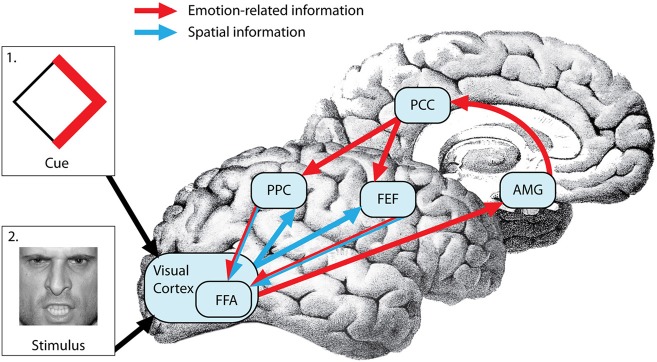Figure 1.

Neural mechanisms of top-down emotional modulation of attention. Prior information regarding upcoming attentional targets (via cue depicted in box 1) is processed in the visual cortex (VC). Emotion-related information from the VC is evaluated in the amygdala (AMG) and projected to the posterior parietal cortex (PPC) and frontal eye fields (FEF) through the post cingulate cortex (PCC). On the other hand, spatial information encoded in the cue is projected from the VC to the FEF and PPC. The FEF and PPC form an integrated search template (a “top-down salience map”) that combines the spatial coordinates of the an event with its emotional salience and bias the visual cortex (more specifically fusiform face area or FFA in this case because the attentional target is a face) in preparation for the search process resulting in faster detection of the target (depicted in box 2).
